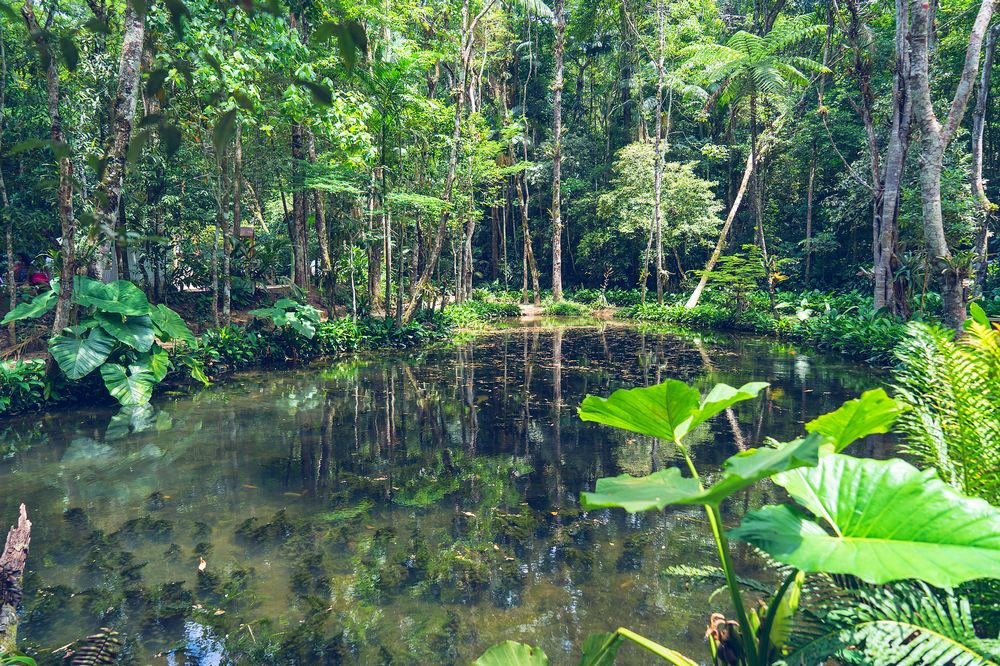Tijuca Park is one of the most important sights of the city in Rio de Janeiro and the most important national park in Brazil. With an area of 3,972 hectares, it is the fourth-largest urban green area in the country. The place is composed of secondary vegetation since it results from reforestation promoted under the Second Reign (1840-1889). Indeed, it had become clear that deforestation caused by coffee plantations was harming the supply of drinking water in the capital of the Empire of Brazil (1822-1889).
The region known as Tijuca Forest, officially called Tijuca National Park, was initially a place with large plantations, mainly coffee, produced on farms, where farmers and settlers deforested the native forest to make the plantations. Unbridled agriculture was a common problem in the 19th century and caused the region’s soil to deteriorate. For instance, large fires were carried out to make way for plantations, where slaves and immigrants worked, compromising the Atlantic forest and water sources. The plantations degraded the forest, which endangered the city’s water supply.

Because of the damage, Emperor Dom Pedro II had to take action. Thus, in 1891, he declared the forests of Tijuca and Paineiras protected forests. He began a process of expropriation of farms to begin the reforestation of the place. He founded one of the oldest protected areas in the world, the second after Yellowstone, in 1872. So much effort was worth it. Today, the Tijuca Park is the largest urban forest in the world!
By order of Dom Pedro II, the reforestation mission fell to Major Manuel G. Archer. Over 13 years, his team has replanted about 100,000 trees. Then, his successor, Baron d’Escragnolle, with the french landscape architect Auguste Glaziou, implanted landscaping concepts in the forest. Years later, in the 1940s, Raymundo Ottoni de Castro Maya used part of his fortune to revitalize parts of Tijuca National Park. Indeed, the project was abandoned since the beginning of the Republic. Mr. Castro founded the Esquilo, Floresta, and Cascatinha Restaurants.
Tijuca National Park has 1,619 plant species. Unfortunately, 433 are in extinction. This makes visiting the Tijuca Forest an incredible way to honor the presence of these species.

The fauna of the Tijuca Forest is composed of a huge diversity of invertebrates, fish, and medium-sized mammals. There are also reptiles and small species such as amphibians and birds. They are important for decomposition, nutrient cycling, and pollination. For that, they are crucial beings in the food chain. 63 species of medium and small mammals live in the Tijuca Forest. For example, there are monkeys, bush dogs, hedgehogs, skunks, and sloths. Animals like the jaguar and tapir are already extinct from the park. In addition, there are 226 species of birds living in Tijuca Park. We can see many species of small birds, like parrots and woodpeckers. Even fragmented, the original biome named Atlantic Forest, preserves a high richness of species and, consequently, is one of the biodiversity hotspots in the world.
Tijuca National Park is home to numerous tourist attractions in the city. In addition to trails, caves, and waterfalls, it also has points such as Pedra da Gávea, Corcovado, and Pico da Tijuca, with 1,022 meters (3.350 feet) above sea level.
As soon as you enter by the main gate of the park, in the Floresta Sector, you will arrive at Cascatinha Taunay after a light 10 minutes walk. This beautiful waterfall is one of the postcards of the park. Next to it, we have the Pensil Bridge. Built under the empire and still in perfect condition, it stands facing the waterfall. To see the bridge right, you will need to go down to the lake that is just before the Cascatinha. From there, you can see it perfectly.
It would be too long to describe all the important points of Tijuca Park. So we have listed the main ones of the Forest sector: the Mayrink Chapel, Excelsior Lookout, Almas Waterfall, Caves Circuit, Lago das Fadas and the Bom Retiro square, where the main trails of the Tijuca forest begin. We recommend visiting with an expert guide to enjoy the best of Tijuca Park. Check our Pico da Tijuca hike or Pedra da Gávea hike offer if you want to climb or our waterfalls and caves hike if you prefer to explore.

Don’t think Tijuca Park is just trails and forest. For food lovers, the park reserves great surprises. As already mentioned, there were three significant restaurants there: Os Esquilos, Floresta, and Cascatinha. Fortunately, Os Esquilos restaurant is still in full operation.
The restaurant Os Esquilos is in an important historical place: The construction was the ancient villa of baron d’Escragnolle, responsible for the reforestation of the park. Then, in 1942, the house belonged to Italian Hugo Busca, who came from Turin bringing a great gastronomic talent. Busca met President Getúlio Vargas, who gave him the concession to open the restaurant in Tijuca Forest, where it was once the administrative headquarters of the park.
From the kitchen are dishes of national and international cuisine, with meat, fish, and poultry on much of the menu. Among the chef’s suggestions is a medallion with Roquefort sauce or mustard sauce, pepper steak, shredded dry meat, salmon in passion fruit sauce, chicken breast in the sauce of boiled apples, or fish fillet with manioc puree, fried bananas, and chestnut farofa. On weekends, the traditional Feijoada is served.
Another important restaurant in the Tijuca Forest region is Bar da Pracinha restaurant, located in Afonso Viseu Square, in Alto da Boa Vista, right in front of the entrance to Tijuca Park. Because of the low temperatures in the vicinity of Tijuca Park, the restaurant has fireplaces and heaters, in a sophisticated, cozy, and romantic atmosphere. The menu is predominantly Brazilian and Carioca cuisine, having as highlight the dishes with filet mignon. On the other hand, during the winter fondues become one of the most popular dishes offered by the restaurant.
